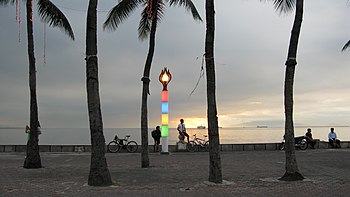Southeast Asian Languages/Philippine Languages
 The Philippine Languages Department The Philippine Languages Department
| |
|
Mabuhay!
 Filipino 1Filipino 1, a foundational course provided by the Division of Southeast Asian Languages, serves as an entry point for students seeking to acquaint themselves with the rudimentary aspects of the language, encompassing uncomplicated vocabulary acquisition, the mastering of fundamental phrases, and the exploration of elementary grammatical structures. Throughout this course, participants embark on an immersive linguistic journey, progressively building their proficiency in Filipino through engaging lessons, interactive exercises, and practical conversational practice that empowers them to communicate effectively in real-world scenarios. |
The PhilippinesThe Philippines is an archipelago located in Southeast Asia, comprising more than 7,000 islands in the western Pacific Ocean. Its rich history is a fascinating blend of indigenous cultures, Spanish colonization, and American influence. The country gained independence in 1946, but its history is marked by centuries of foreign rule, including over 300 years of Spanish colonization that left a lasting impact on the culture and religion. The Philippines is known for its diverse population, with over 100 million people, making it one of the most populous nations in Southeast Asia. In terms of demographics, the Philippines is a melting pot of ethnic groups and languages. The majority of Filipinos are of Malay descent, but there are also significant Chinese, Spanish, and American influences due to centuries of trade and colonization. The official languages are Filipino (based on Tagalog) and English, with a wide variety of regional languages and dialects spoken throughout the islands. The predominantly Roman Catholic faith, brought by the Spanish, plays a central role in the culture, but there are also significant Muslim and indigenous communities. Geographically, the Philippines is a stunningly diverse country. Its archipelagic nature means it boasts a wide range of landscapes, from lush tropical rainforests to active volcanoes and pristine beaches. The country is also vulnerable to natural disasters, with frequent typhoons, earthquakes, and volcanic eruptions. Despite these challenges, the Philippines is known for its natural beauty and has a vibrant tourism industry, attracting visitors from around the world who come to explore its breathtaking scenery and experience its unique culture. |
 Lessons
| |

